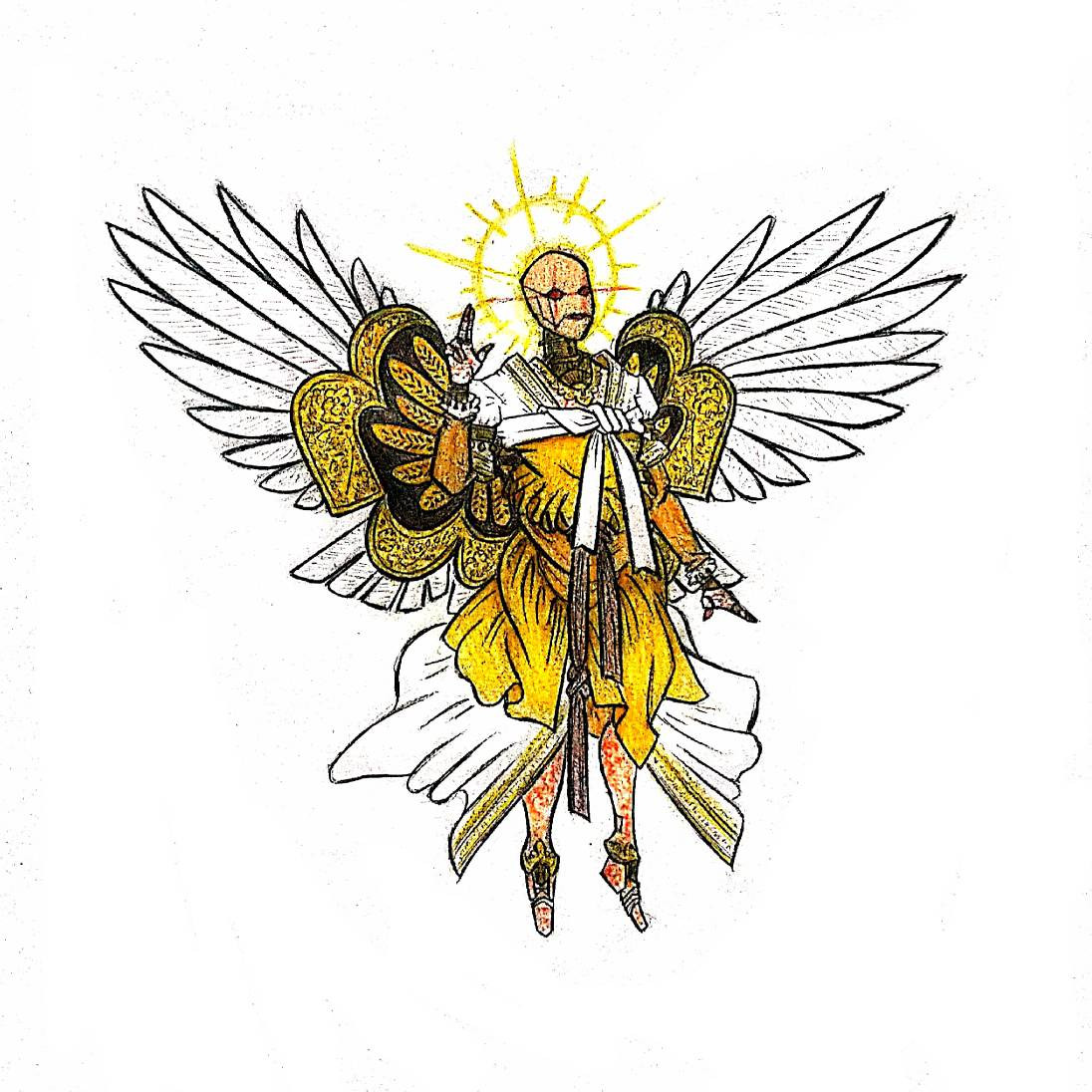HOME | DD
 Avapithecus — Angel
Avapithecus — Angel

#angel #automaton #bible #biblical #character #christian #design #islam #jewish #mythology #abrahamic
Published: 2023-04-18 13:52:22 +0000 UTC; Views: 3380; Favourites: 65; Downloads: 7
Redirect to original
Description
Angels, for all their popularity, have obnoxiously obscure origins. Well okay, it's fairly evident where angels as a whole come from. Canaanite mythology features a heavenly host of the 70 divine sons of the chief god El, an iconography which would later be transplanted onto Yahweh. As monotheism took hold in the land of Israel in the post-Exilic period, these "elohim" (literally "gods") in the heavenly host got demoted to lesser spiritual beings which would later come to be called "mal'akh" which literally translates to "messenger". In Greek this word would be directly translated into "angelos", hence our modern word for these beings. We don't really see development of these lesser spiritual beings until the post-Exilic period. The influence of Zoroastrianism, which does have a rich tapestry of such entities, is evident. Though, we get more direct transplants instead in Jewish demonology, such as the explicitly Persian demon Asmodeus.No, when I say that angels have frustratingly obscure origins, I mean the individual angels themselves. Try as I might, I cannot find any scholarship on the historical development of Michael or Gabriel or any of the other named angels. They just kinda appear fully developed out of thin air. I've seen one paywall blocked paper claiming that Michael is a reflex of the god Resheph, presumably because the god is also called "Mikal", but the name "Michael" pretty clearly is just Hebrew for "Who is like God" and not a true cognate, so unless there's some intentional pun here, the linguist in me isn't very convinced without any follow up literature on the subject. If anyone knows any additional scholarly literature on the subject, please do let me know. I'd very much like to read through it.
Design notes, fun fact: when I was in college, my specific field was Islamic studies. I was absolutely enthralled with the Islamic Golden Age and wanted to learn more about the world's second largest religion. In one of my classes, we went into Islamic theology and cosmology, which included the different classes of supernatural beings: angels, demons, and djinn. I'm simplifying here, but one thing that struck me was that djinn are the only beings aside from humans with free will, while angels and demons have none. Angels are programmed to follow the exact word of God even if it would harm a human to do so, while demons are programmed to disobey the word of God under every circumstance. They're not the charismatic creatures with personalities we often portray them as in modern media. They're more seen as divine automatons, machines with strict analog programming, and I thought that was such a cool and unique way to portray them that hasn't been explored much. So when I set out to design a generic angel for my D&D game, I really leaned into the idea of the robotic automaton, taking heavy inspiration from the hydraulic inventions of Ismail al-Jazari and porcelain dolls from the time and region.
I'm also a little tired of the "biblically accurate angel" trope with all its "um actually" attitude. Because the trippy rings of eyes that people tend to call "biblically accurate angels" are actually just one small sect of angels, the Ophanim. And the multi headed monsters are the Cherubim specifically. The lowest tier, everyday angel is described in the Bible as just a humanoid figure often indistinguishable from a normal person. Indeed, this is evident in the etymology. "Mal'akh" is the Hebrew word for broad stroke angels, but it also applies to pretty much all messengers in the text, be they human or divine. Many of the verses where we substitute the word angel could just as easily be substituted for a human messenger without changing much of the context. So while yes the Renaissance depictions of Cherubim as dopey little babies is inaccurate, it doesn't mean the winged humanoid angel is inaccurate for the majority of angels. Indeed, many depictions of angels going back to the Roman period and well into the Islamic period draw them as winged humans, so there is still a historical precedent to draw from. Yes I realize this is entirely just my own pet peeve lol, but I still feel the need to justify my little clockwork porcelain dudes.
Related content
Comments: 2

👍: 1 ⏩: 1

👍: 1 ⏩: 0
























